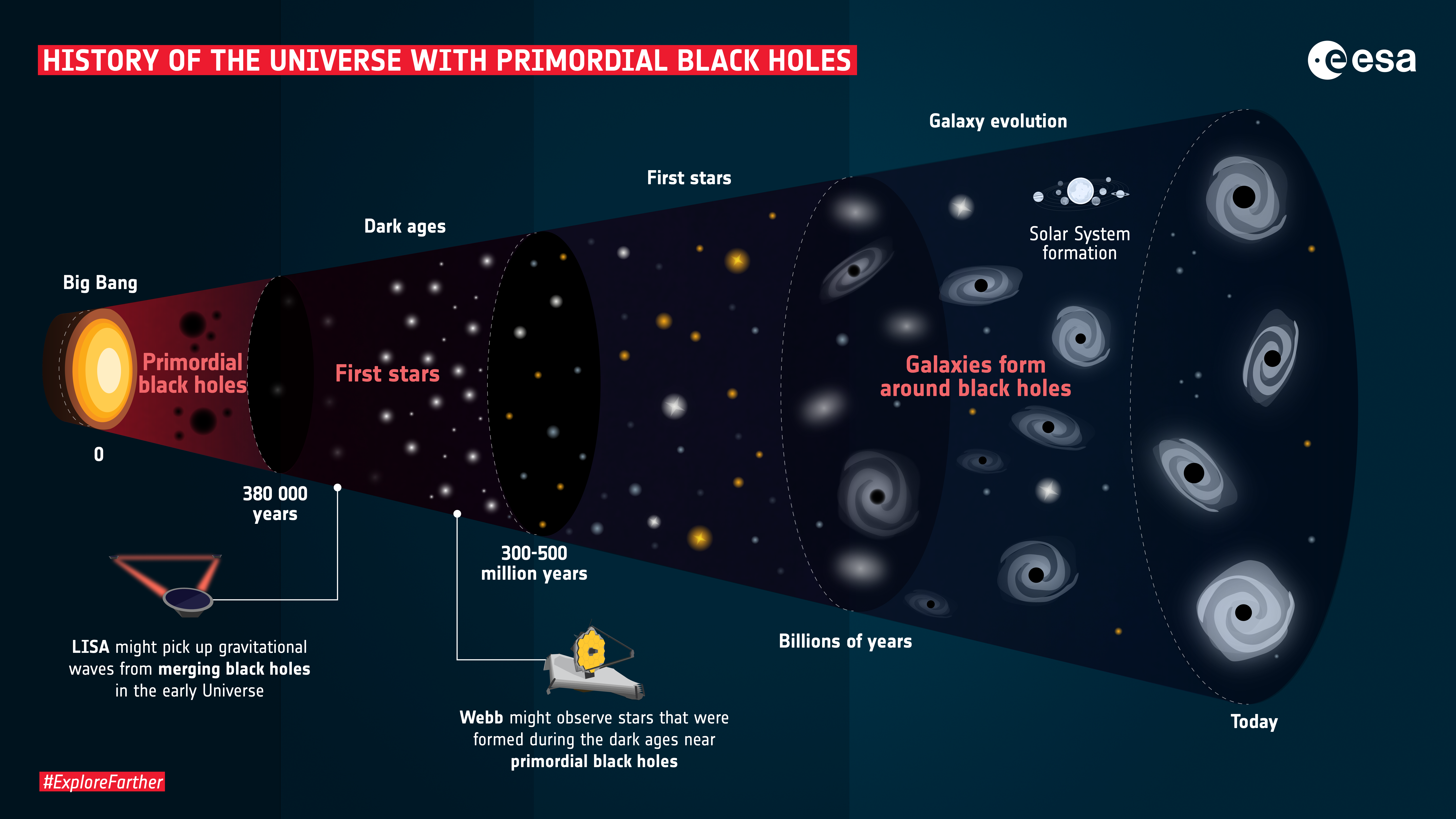The first stars, known as Population III stars, were born approximately 100 million years after the Big Bang when the universe was less than 1% of its present age. Population III stars are of fundamental importance to the initial mass function (IMF) of stars, which determines how the universe has evolved over time (see Fig. 1). As Population III stars are shortly lived, they rapidly enrich the interstellar medium with heavy elements. Therefore, measuring such 'leftover' metals reveals the Population III signature, thereby constraining the IMF and nucleosynthesis processes that took place right after the Big Bang.

Figure 1: The evolutionalry history of first stars, black holes, and galaxies. (credit: ESA)
At earlier cosmic epochs, we have a higher probability of detecting signatures from Population III stars both in the galaxy and their surrounding gaseous halo, the so-called circumgalactic medium (CGM). The James Webb Space Telescope (JWST) shows unprecedented ability to detect galaxies in the first billion years. The relative metal abundance pattern is a unique signature that allows us to discover their footprint in the gaseous halo in and around galaxies (see cartoon in Fig. 2).

Figure 2. Cartoon illustrating the mechanisms of this work. The authors observe the multiphase circumgalactic medium using VLT/Xshooter with quasar spectra, and surrounding galaxy spectra with JWST. (credit: Siwei Zou, NASA, ESA)
In a recent work led by Siwei Zou, a postdoc at Tsinghua’s department of Astronomy, data from JWST and the large ground-based Very Large Telescope (VLT) are combined to study the CGM-galaxy connection at a redshift of z = 6-6.5. The results reveal a significant enhancement of carbon and oxygen compared to iron in the CGM of galaxies at the end of cosmic reionization. This enhancement is visible in a subclass of metal-poor stars (metallicity < 0.001 solar metallcity), which are believed to be a signature of Population III stars (see Figure 3). The simulations of chemical abundance in high-redshift galaxies in this work shows that a more massive-star-dominated IMF (top-heavy IMF) can partially explain the observed [C/Fe] and [O/Fe]. If this top-heavy IMF of Population III stars is adopted, then the relative abundance of elements in the observed gas can be reproduced. Conversely, this indicates that the gas we observe may have been polluted by Population III stars. This work provides a highly effective method for future searches for Population III stars in the early universe.

Figure 3. Relative carbon over iron abundance in the CGM gas versus the age of the surrounding galaxies. The purple, black, and light purple curves represent standard predictions from galactic chemical enrichment modeling results , adopting different IMFs. The red star denote the [C/Fe] value generated in the neutral gas at z~6, adopting a dedicated Population III IMF (Kulkarni et al., 2013).
This work is suppported by the China Manned Space Project, Natural Science Foundation of China and Tsinghua University. This work is in collaboration with University of Arizona, the Max Planck Institute for Astronomy, Leiden Observatory, Tata Institute of Fundamental Research, Gemini Observatory, MIT Kavli Institute for Astrophysics, Peking University, and Nanjing University etc. Dr. Siwei Zou is the first and corresponding author, Prof. Zheng Cai, students Zihao Li, Xiaojing Lin, Yunjing Wu, and Mingyu Li has participated in this work.
Paper link: https://iopscience.iop.org/article/10.3847/2041-8213/ad23e7


